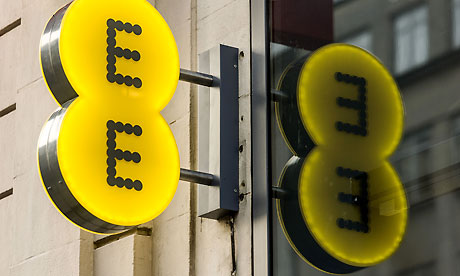Last year, with a deft move that left its competitors fuming, Everything Everywhere became the first UK operator to offer LTE services. This week, as Ofcom’s LTE spectrum auction got underway, Everything Everywhere has become—rather less auspiciously—the first UK operator to slash its LTE retail charges.
January 24, 2013

Last year, with a deft move that left its competitors fuming, Everything Everywhere became the first UK operator to offer LTE services. This week, as Ofcom’s LTE spectrum auction got underway, Everything Everywhere has become—rather less auspiciously—the first UK operator to slash its LTE retail charges.
Most notable was the special promotion that will give customers 500MB of LTE data, and the standard unlimited domestic calls and texts for £31/month over 24 months with a handset for less than £30. That’s cheap.
At the high end, consumers that EE profiles as “super users” can spend £46/month for 20GB of data with a SIM-only plan if they sign up before the end of next month.
EE says that these are time-limited special offers but price-cutting tends to be a one-way journey. Even if these tariffs do revert to more significant premiums, other offers will take their place. Especially when Vodafone, O2 and 3UK deploy their own offerings.
These players, along with EE, are currently stacking their chips on the green baize of Ofcom’s gambling table. You wonder what they make of EE’s announcement as they weigh their wallets. It’s not the most positive of messages about the prospects for LTE operators in the UK—EE only launched in November and the prices are already coming down.
Unfortunately, and unlike the 3G auction, this game is being played behind closed doors so we won’t know if EE’s retail re-jigs will affect any other player’s valuation on the spectrum until the process has concluded.
We can draw a few conclusions from EE’s pricing tactics, though. First, the firm knows that its LTE lead is running out fast and it wants to wring every advantage from it that it can. Second, money is tight and the market is price sensitive at the moment. Third, and most worrying for EE and its competitors, faster network speeds just aren’t enough of a draw for consumers in the immediate term.
Consider that EE is cutting its prices in the face of no comparable network offering from any of its competitors. We’re used to hearing about price cuts because of intense competition; price cuts in a monopoly are somewhat less common.
The reality, of course, is that EE’s LTE network has plenty of compeition, from the UK market’s 3G HSPA networks (EE’s own included).
Why should the end user pay even EE’s reduced rate of £31/month for 500MB of LTE data and a limited range of handsets when they can pay £26/month for 1GB of data at HSPA+ rates and get the Nexus 4 for free? This makes more sense financially to the consumer because consumers value the device more than they value the network.
Now this is bitterly unfair, because the network is the most complicated part of the mobile service and by far the most expensive to deploy and maintain. But it is a fact—and one that is unlikely to change any time soon.
Which is why operators need to be given as much flexibility as possible in their deployment of LTE networks. Ofcom is publicly committed to maintaining the number of separately owned and operated LTE networks in the UK market; it is one of the goals of this auction. And yet as our Telecoms.com Intelligence Industry Survey 2013 reveals, 65 per cent of respondents believe that network sharing is essential to the profitability of LTE. Not a useful tool to improve cost management, but essential to profitability.
Read more about:
DiscussionAbout the Author(s)
You May Also Like








.png?width=300&auto=webp&quality=80&disable=upscale)


_1.jpg?width=300&auto=webp&quality=80&disable=upscale)


.png?width=800&auto=webp&quality=80&disable=upscale)